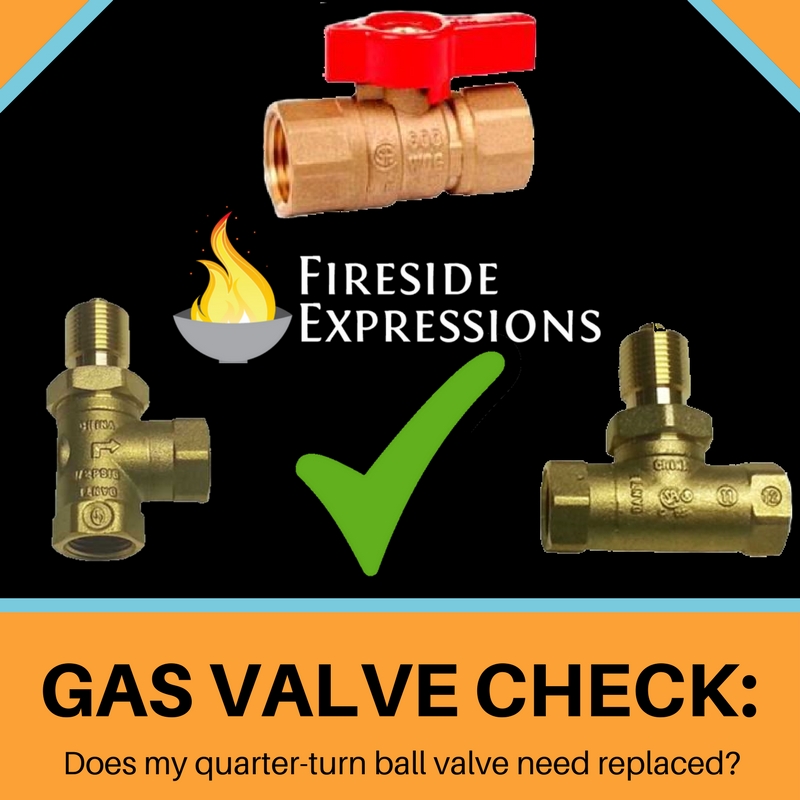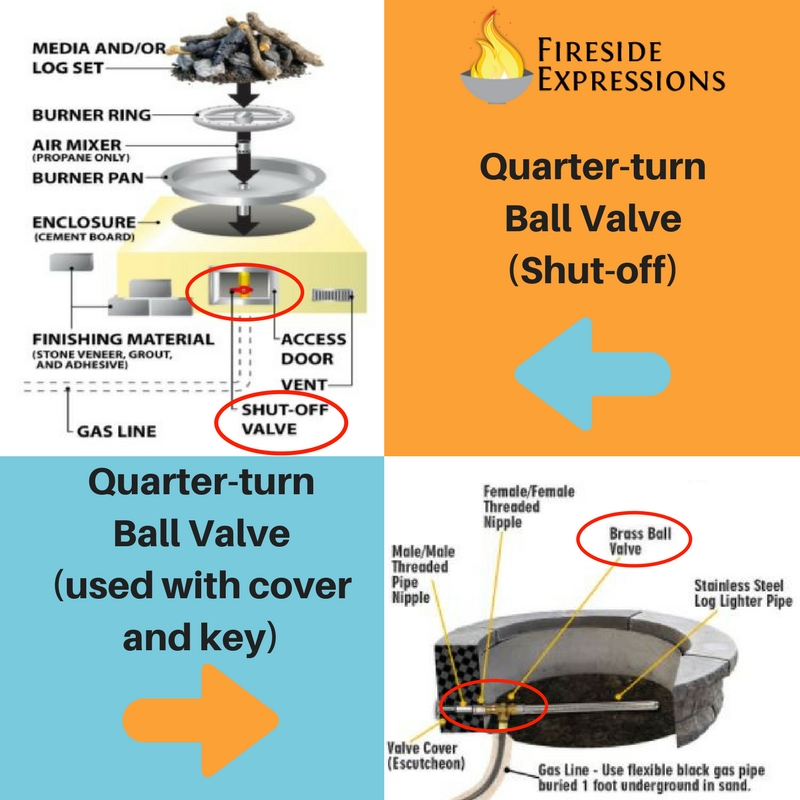 If you have an outdoor gas burning feature, now is the time to be proactive with some routine maintenance. Before the summer comes to an end, it's a good idea to check for problems and get them taken care of before your local gas professional is up to his/her eyeballs in service calls for heating appliances. Fireside Expressions is here once again to arm you with helpful tips and information on how you can check to see if your gas connections are in safe working order!
If you have an outdoor gas burning feature, now is the time to be proactive with some routine maintenance. Before the summer comes to an end, it's a good idea to check for problems and get them taken care of before your local gas professional is up to his/her eyeballs in service calls for heating appliances. Fireside Expressions is here once again to arm you with helpful tips and information on how you can check to see if your gas connections are in safe working order!
Whether you have an outdoor fireplace, a fire pit or bowl, or even a stainless steel log lighter to conveniently start a blaze in your wood burning fire pit, chances are you have a straight or angled quarter-turn ball valve. This gas supply component is located at the end of your natural gas or propane fuel line and just before your lighter or burner. Ball valves have an interior hollowed out sphere that either blocks or accommodates gas flow depending on the position it is in. These inline valves are super easy to operate, utilizing either an easy-grip handle (shut off valve) or a valve cover and key to orient the ball 90 degrees in one of two directions:
- Gas ON (handle is parallel to the valve and ball is turned to let gas flow through its center)
- Gas OFF (handle is perpendicular to the valve and ball is turned to block the flow of gas)
The simple design of the valve and complete brass fabrication makes for a durable, long-lasting component. However, even the best valves eventually succumb to wear and tear, and (at times) less than favorable insulation during the off-season. It is always a good idea to test for leaks at least twice a year: once at the beginning of spring before you enjoy that first fire in your outdoor feature, and once more at the end of summer before closing everything up for the year.
WHAT WOULD CAUSE MY GAS VALVE TO LEAK?
 Even valves that are labeled "bubble-tight" or "zero leakage" are not always 100% leak free. A gas valve leak can emit natural gas or propane into the air and pose safety and environmental threats. A leak could even remain within your piping system and cause a hazard to your fire feature and gas lines/connections. Either way, a leak is never good and must be tended to immediately.
Even valves that are labeled "bubble-tight" or "zero leakage" are not always 100% leak free. A gas valve leak can emit natural gas or propane into the air and pose safety and environmental threats. A leak could even remain within your piping system and cause a hazard to your fire feature and gas lines/connections. Either way, a leak is never good and must be tended to immediately.
If you smell gas coming from your fire feature when it is not in use, check for the following:
- Is the valve fully closed? (The handle would be perpendicular to the valve, or when inserting the key into the escutcheon, it would point to the OFF position on the plate.)
- Is the valve visibly damaged? (Any type of damage to the valve or connections will cause leakage.)
- For newly installed gas features, is the valve the correct size? (Selecting a valve that is too big is the most common cause of leakage. We recommend having a certified gas professional connect your feature to ensure the correct component has been installed.)
WHAT CAN I DO TO PROTECT AGAINST VALVE LEAKAGE?
 Other than selecting the appropriate size valve for your project, another way to help stop leakage is to simply perform regular inspection of your setup. Early detection is the best prevention. Let us walk you through an easy DIY diagnostic test!
Other than selecting the appropriate size valve for your project, another way to help stop leakage is to simply perform regular inspection of your setup. Early detection is the best prevention. Let us walk you through an easy DIY diagnostic test!
- Fill a spray bottle with water and add a few tablespoons of dish washing soap.
- Adjust the spray nozzle to "STREAM" so that you get a sharp immersion of water onto the valve; wet it thoroughly with the solution. The "STREAM" setting will also allow the soapy mixture to reach into any areas that are not easily accessible.
- Turn on the gas and check for bubbles.
- Small bubbles resembling foam that form at the valve connection indicate a small leak, which is usually not a cause for concern. Larger bubbles indicate a greater issue and should be relayed to your gas professional immediately!
- For small leaks, a majority of the time this can be fixed by tightening the connection. Wipe off the solution and then tighten the fitting with a pipe wrench. Apply a new stream of the mixture and recheck. If you are still seeing bubbles and have tightened the fitting completely, you may want to have a gas professional inspect your setup.
For those instances where a new quarter-turn ball valve is needed, we have plenty of options for you to choose from! We have both angled and straight models in standard or high capacity output. For inline shut off valves or units that operate with the turn of a key, Fireside Expressions is your one-stop source for reliable, high-quality replacement components for your outdoor fire feature! Always remember to cover your outdoor fire feature to protect it and the gas connection components from inclement winter weather!
